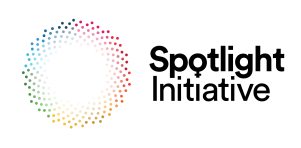Report on the Gender Pay Gap as a Barrier to Achieving the 2030 Agenda for Sustainable Development
Introduction: The Gender Pay Gap and its Implications for the SDGs
The persistent gender pay gap presents a significant impediment to the realization of the 2030 Agenda for Sustainable Development. This discriminatory gap directly undermines progress on several Sustainable Development Goals (SDGs), most notably SDG 5 (Gender Equality), SDG 8 (Decent Work and Economic Growth), and SDG 10 (Reduced Inequalities). The failure to ensure equal pay for work of equal value erodes women’s rights, compromises income security, and inhibits the inclusive, sustainable economic growth envisioned by the 2030 Agenda.
Current Status of Wage Inequality and its Impact on SDG 10
Globally, women earn on average 20 per cent less than men. This disparity is a direct contravention of SDG 10, which calls for reducing inequalities of outcome. The gap is even more pronounced for specific groups, further exacerbating inequalities and hindering the goal of leaving no one behind.
- Women from racial and ethnic minorities
- Women with disabilities
- Migrant women
International Commitments and Legal Frameworks for SDG 5 and SDG 8
The principle of equal pay for work of equal value is a fundamental right and a cornerstone of gender equality (SDG 5) and decent work (SDG 8). This commitment has been affirmed in numerous international agreements over the past three decades.
- The Beijing Declaration and Platform for Action: Committed governments to legislate and enforce equal pay.
- The 2030 Agenda for Sustainable Development: Reaffirmed this pledge, specifically within SDG Target 8.5, which calls for equal pay for work of equal value.
- ILO Convention 100: Enshrines equal remuneration as a fundamental right.
- The UN Charter: Calls for international cooperation in promoting and encouraging respect for human rights for all.
A Multi-Stakeholder Approach to Accelerate Progress (SDG 17)
Achieving wage equity by 2030 requires urgent, coordinated action from all stakeholders, reflecting the principles of SDG 17 (Partnerships for the Goals). The Equal Pay International Coalition (EPIC), co-led by UN Women, ILO, and OECD, exemplifies this multi-stakeholder model by uniting governments, employers, and workers’ organizations to advance this agenda. The specific roles of key partners are critical for success.
- Governments: Must establish and enforce legal and policy frameworks that mandate wage equity and promote decent work.
- Employers: Must embed these frameworks through transparent pay practices, equity audits, and the creation of gender-responsive workplaces.
- Workers’ Organizations: Must drive social dialogue and collective bargaining to advocate for fair compensation.
- International Institutions and Research Bodies: Must provide evidence, data, and technical support to inform policy and practice.
Conclusion and Call to Action for SDG Realization
With the 2030 deadline approaching, the international community must intensify its efforts to close the gender pay gap. This is not only a matter of human rights but a prerequisite for achieving the Sustainable Development Goals and realizing women’s full economic empowerment. All stakeholders are called upon to take decisive action.
- Renew commitments to the principle of equal pay for work of equal value.
- Join and actively participate in partnerships such as the Equal Pay International Coalition (EPIC).
- Step up collective action to eliminate the gender pay gap, thereby accelerating progress towards a more equitable and sustainable future for all.
1. Which SDGs are addressed or connected to the issues highlighted in the article?
The article highlights issues directly connected to several Sustainable Development Goals (SDGs), primarily focusing on gender equality, economic growth, and reducing inequalities.
-
SDG 5: Gender Equality
This is a central theme of the article. The text explicitly discusses the “gender pay gap,” “women’s rights,” and the need to “realize women’s full economic empowerment.” The entire discussion revolves around achieving equality between genders in the economic sphere, which is a core objective of SDG 5.
-
SDG 8: Decent Work and Economic Growth
The article directly references the pledge for “equal pay for work of equal value” and the need for “decent work.” It also states that the pay gap “holds back inclusive, sustainable economic growth.” This aligns perfectly with SDG 8’s goal of promoting sustained, inclusive, and sustainable economic growth, full and productive employment, and decent work for all.
-
SDG 10: Reduced Inequalities
The article points out that the gender pay gap has a disproportionate impact on specific groups, noting “even wider gaps for women from racial and ethnic minorities, women with disabilities, and migrant women.” This directly addresses the aim of SDG 10 to reduce inequality within and among countries by empowering and promoting the social and economic inclusion of all, irrespective of sex, race, or disability status.
2. What specific targets under those SDGs can be identified based on the article’s content?
The article’s content points to several specific targets under the identified SDGs.
-
Target 8.5 (under SDG 8)
“By 2030, achieve full and productive employment and decent work for all women and men, including for young people and persons with disabilities, and equal pay for work of equal value.”
This target is explicitly mentioned in the article. The text states that the “Beijing Declaration and Platform for Action committed governments to legislate and enforce equal pay for work of equal value—a pledge reaffirmed in the 2030 Agenda for Sustainable Development.” This is a direct reference to the core principle of Target 8.5.
-
Target 5.1 (under SDG 5)
“End all forms of discrimination against all women and girls everywhere.”
The article describes the gender pay gap as a “discriminatory gap” that “erodes women’s rights.” The call for governments to “set the legal and policy frameworks for wage equity” is a direct action towards ending this form of economic discrimination, which is the goal of Target 5.1.
-
Target 10.2 (under SDG 10)
“By 2030, empower and promote the social, economic and political inclusion of all, irrespective of age, sex, disability, race, ethnicity, origin, religion or economic or other status.”
The article’s specific mention of “wider gaps for women from racial and ethnic minorities, women with disabilities, and migrant women” directly relates to this target. Closing the pay gap for these specific groups is a key step toward achieving the economic inclusion called for in Target 10.2.
-
Target 10.4 (under SDG 10)
“Adopt policies, especially fiscal, wage and social protection policies, and progressively achieve greater equality.”
The article calls for “coordinated action to close the gender pay gap” and urges governments to “set the legal and policy frameworks for wage equity.” This aligns with Target 10.4, which advocates for the adoption of wage and social protection policies to achieve greater equality.
3. Are there any indicators mentioned or implied in the article that can be used to measure progress towards the identified targets?
Yes, the article mentions and implies specific indicators that can be used to measure progress.
-
Indicator 8.5.1: “Average hourly earnings of female and male employees, by occupation, age and persons with disabilities.”
The article provides a direct data point for this indicator by stating, “Women still earn on average 20 per cent less than men worldwide.” This statistic is the primary measure of the gender pay gap and is the exact type of data collected under Indicator 8.5.1 to track progress towards Target 8.5.
-
Indicator 5.1.1: “Whether or not legal frameworks are in place to promote, enforce and monitor equality and non-discrimination on the basis of sex.”
This indicator is implied by the article’s call to action. It urges governments to “set the legal and policy frameworks for wage equity and decent work.” The existence, adoption, and enforcement of such laws are the measures for this indicator. The article’s emphasis on legislation and policy directly points to the need to track progress using Indicator 5.1.1.
4. Table of SDGs, Targets, and Indicators
| SDGs | Targets | Indicators |
|---|---|---|
| SDG 5: Gender Equality | Target 5.1: End all forms of discrimination against all women and girls everywhere. | Indicator 5.1.1 (Implied): The call for governments to “set the legal and policy frameworks for wage equity” implies the need to measure whether such frameworks are in place to enforce non-discrimination. |
| SDG 8: Decent Work and Economic Growth | Target 8.5: By 2030, achieve full and productive employment and decent work for all women and men… and equal pay for work of equal value. | Indicator 8.5.1 (Mentioned): The statistic that “Women still earn on average 20 per cent less than men worldwide” is a direct measure of the average earnings of female vs. male employees. |
| SDG 10: Reduced Inequalities |
Target 10.2: By 2030, empower and promote the social, economic and political inclusion of all, irrespective of… sex, disability, race, ethnicity…
Target 10.4: Adopt policies, especially fiscal, wage and social protection policies, and progressively achieve greater equality. |
The article’s focus on “wider gaps for women from racial and ethnic minorities, women with disabilities, and migrant women” and the call for “policy frameworks for wage equity” relate to tracking economic inclusion and the adoption of wage policies, which are central to measuring progress on these targets. |
Source: unwomen.org







